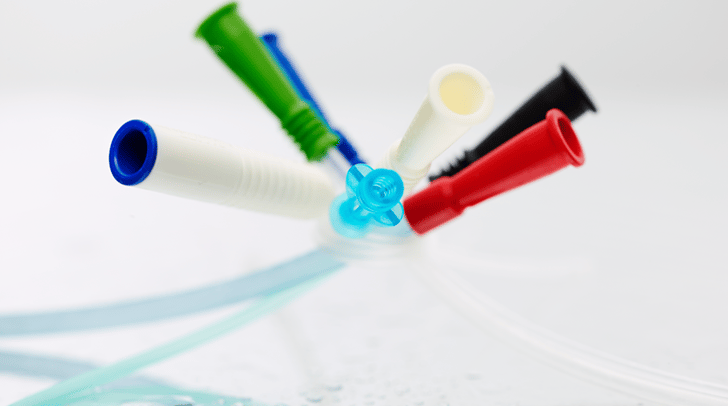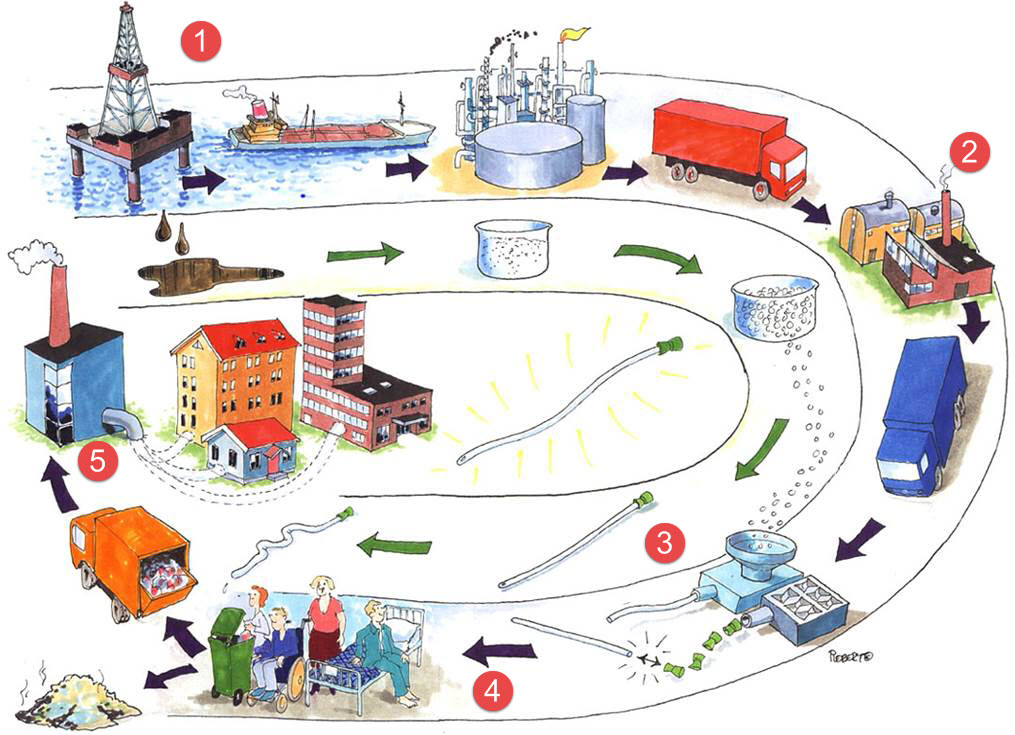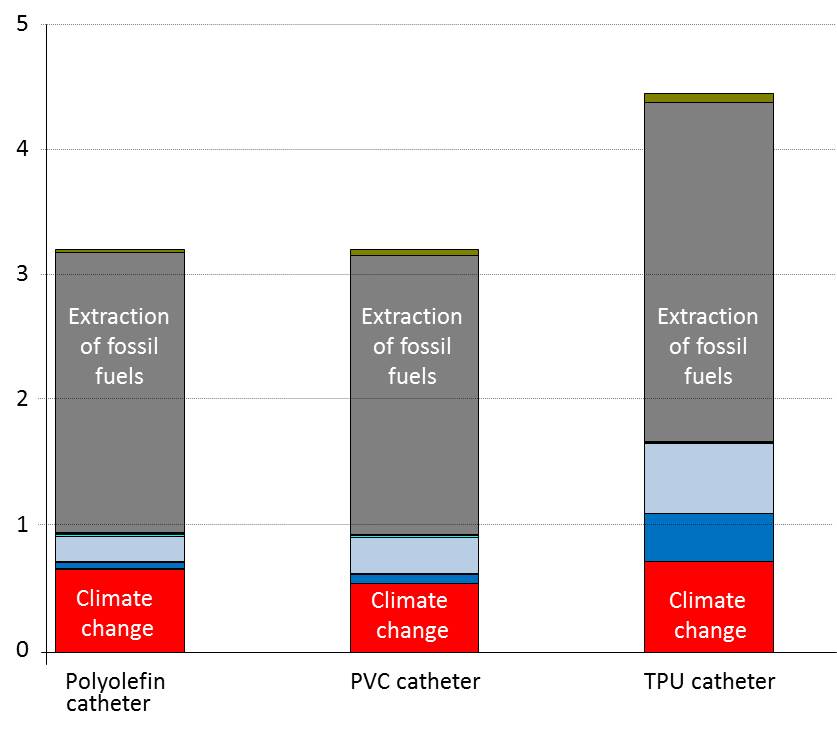In a perfect world, urinary catheters would be environmentally friendly enough to flush down the toilet, but not yet achievable. But there are ways to reduce the environmental footprint of catheters!

PVC in medical devices
PVC is the most commonly used plastic in medical devices, such as flexible containers and tubing, but also in other applications in a health care setting, likea disposable gloves, curtains and flooring.
PVC was originally developed as a replacement for natural rubber and glass. Medical devices made from these traditional materials demanded cleaning and re-sterilisation before re-use, and in the 60's PVC made it possible to manufacture single use devices.
Today, PVC is suspected of having created a number of environmental health risks. There are two key problems associated with PVC:
- Dioxin, a known human carcinogen that can be formed during incineration (burning) of PVC-containing municipal waste.
- Phthalates, which is used to soften PVC plastic and is suspected to reduce fertility.
PVC phase-out
The good news are that hospitals and other health care facilities around the world are phasing out PVC, or at least phtalates, switching to safer alternatives. This movement is obvious also in the catheter industry and there are alternative materials in the market today.
Some examples are:
- Polyolefin, for example POBE in LoFric catheters from Wellspect HealthCare
- Thermoplastic Polyurethane (TPU) in for example SpeediCath catheters from Coloplast
- Phthalates-free PVC material in for example VaPro from Hollister
To measure the environmental impact of different materials you need to consider the whole catheter lifecycle:

1. Oil is extracted from the earth and refined
2. The oil is transformed into plastic pellets in a plastic factory
3. The catheters are produced
a. Extrusion to tubing
b. Injection molding to catheter handles
c. Packaging
d. Sterilization
4. Transportation
5. Waste handling
Lifecycle analysis
The different steps of the lifecycle are then analyzed from six environmental aspects; acidification, eutrophication (overfertilization), extraction of non-renewable sources, toxic emissions, climate change and ozone layer depletion (using the Eco-indicator99 method).

Of these, the most significant environmental aspects are extraction of fossil fuels (grey) and climate change (red).
By switching from a PVC catheter to a Polyolefin catheter (e.g.LoFric) you avoid plasticizers, but you also avoid an increasing environmental impact, as for TPU catheters.
If it were possible to use 100% bio-based material, both the grey and the red bar would disappear.
The process is not yet in place but the development of new materials is ongoing. Let's hope for urinary catheters with a significally reduced impact on the environment in a not too distant future!
Click this link to read the full report: Development and environmental improvements of plastics for hydrophilic catheters in medical care: an environmental evaluation (Stripple H, Westman R, Holm D, 2008).




